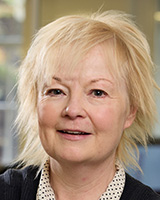Spectrum sharing policy: quality of experience will be a key factor in licence-exempt spectrum
Demand for access to radio spectrum is growing, and the range of potential users is becoming increasingly diverse. As a result, many regulators are faced with the challenge of setting policy designed to achieve better spectrum utilisation. Enabling secondary use, or sharing, is a potential approach, but it raises complex technical and commercial issues for both regulators and users. Furthermore, even identifying whether a band is under-utilised or not raises questions as regards to how to determine under-use, as well as where usable gaps exist and how these might be re-used without disrupting either the primary, or the secondary, use.
Spectrum sharing has been achieved on a 'best efforts' basis to date, often licence-exempt
Secondary use of spectrum has been an integral part of international spectrum policy for many years, and ITU frequency allocations typically designate bands both to a primary use and to one or more secondary uses. It is the normal convention that any secondary uses of spectrum must not cause interference to the primary use and must also be designed to operate in the presence of interference from other primary, or secondary, uses. Accordingly, most secondary uses are on a 'best efforts' basis and do not guarantee interference-free operation. This is not suitable for all types of wireless system (for example, services such as 3G/4G mobile, where users pay a premium to be provided with the best available service level). However, it is suitable for a range of other systems, and applications ranging from programme making and special events (PMSE) to Wi-Fi, and various forms of short-range device access spectrum on a secondary basis within bands allocated to another, primary, service.
There is now growing market interest in making sharing arrangements more flexible and of better quality. Various dynamic access methods are emerging that attempt to establish a more predictable, and flexible, sharing environment for both the primary and the secondary uses.1 New, flexible sharing systems being commercialised at present include white space devices that are designed to operate in spectrum bands used by digital terrestrial television (DTT), through use of geolocation databases.
Regulators that have so far implemented TV white space authorisations have generally proposed that white spaces be accessed by secondary systems on a licence-exempt (sometimes referred to as unlicensed) basis. Licence exemption is an established authorisation method for certain types of wireless system (typically those operating at low powers and/or very short range) and is the way in which Wi-Fi systems operate in 2.4GHz and 5GHz spectrum. Some fixed-link bands are also authorised in this way (such as spectrum around 60GHz). Licence-exempt authorisation inherently implies a 'best effort' service for users because the number and location of other licence-exempt users accessing the same frequency space is not usually known.
Quality of user experience is a key factor in use of wireless systems in licence-exempt, and licensed, bands
Some proposed uses of TV white spaces – such as the provision of wireless broadband access in rural areas – may benefit from a more consistent level of service quality than traditional licence-exempt operation is able to offer. The quality of service received may be a concern for broadband users, who are accustomed to receiving consistent levels of service quality from wired networks and may be unwilling to pay for an inconsistent service. Other users of white space, such as machine-to-machine (M2M) use, may not have such stringent quality of service requirements, but nevertheless may require access to good quality spectrum in order to ensure that messages are delivered efficiently.
To enable systems operated in shared (licensed or licence-exempt) spectrum to achieve a more consistent level of service, better information may be needed on how a given spectrum is being used at a given location and time, in order to provide sufficient metrics to define a band's utilisation, which can be used to inform system designs. It may also require regulators (and system developers) to consider the whole system performance – that is, the performance of receivers as well as the more traditional authorisations of transmissions. In particular, receivers need to be designed to operate in a shared bandwidth.2
Intermediate forms of authorisation, such as 'light licensing', might also be increasingly considered in cases where users require the best available service level, because light licensing typically enables regulators to hold a register of what secondary systems are authorised to operate in spectrum at a given location. Such an approach could also enable regulators to track how spectrum use is changing over time, which may be relevant when considering how efficient the use of a particular band is – both in terms of the primary use, and the secondary users that are sharing the spectrum.
1 Dynamic spectrum access methods in general attempt to access spectrum in a more opportunistic way than traditional sharing models have allowed, in order to make use of spectrum that may not be in use at a particular time and location by the primary user, which may change over time.
2 Receiver design is a key factor in the feasibility of using TV white space spectrum because TV receivers have so far not been designed to operate in shared spectrum. Other examples of flexible spectrum policy hindered by receiver design include flexible use of 2.6GHz spectrum (for example, TDD operation within FDD downlink spectrum), which proved difficult because FDD devices are designed to receive signals across the entire downlink band.
Downloads
Article (PDF)Authors

Janette Stewart
Partner, expert in spectrum management, policy and valuationLatest Publications
Article
Policy makers must explore all possible levers to achieve gigabit connectivity ambitions
Report
AI for connectivity: how policy makers can help digitalisation
Report
LEO satellite broadband: a cost-effective option for rural areas of Europe

